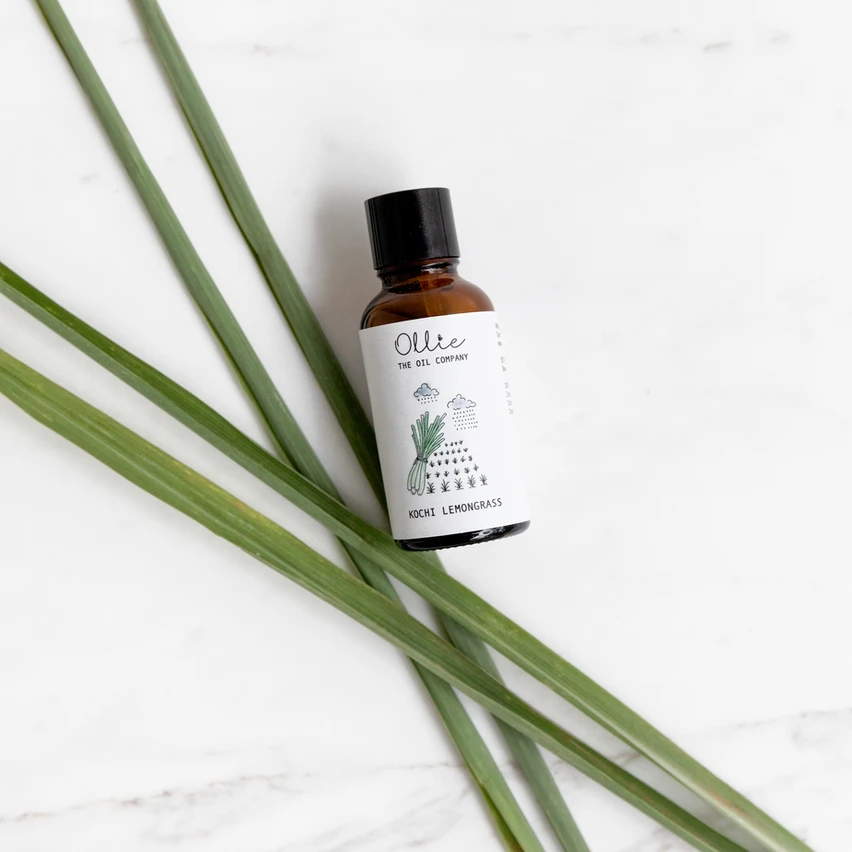Aromatherapy’s Emerald Elixir: Unveiling the Magic of Lemongrass Oil for Pain Relief and Mood
In a world increasingly seeking solace beyond the sterile confines of conventional medicine, the ancient art of aromatherapy offers a vibrant tapestry of natural remedies. Among its many threads, one gleams with a particular verdant brilliance: lemongrass essential oil. Often overshadowed by its more celebrated cousins like lavender or frankincense, lemongrass (Cymbopogon species) possesses a quiet yet profound power, a harmonious symphony of chemical compounds that can gently, yet effectively, soothe aching bodies and uplift weary spirits. This is not mere folk belief; it is the "aromatherapy magic" that emerges when botanical wisdom converges with modern scientific understanding, revealing a story of relief and rejuvenation waiting to be embraced.
Our journey into the heart of lemongrass oil is a narrative of discovery – from its humble origins in sun-drenched fields to its sophisticated molecular interactions within the human body. For the knowledgeable seeker, this exploration will delve beyond superficial claims, unearthing the historical roots, botanical intricacies, precise chemical profiles, and scientifically proposed mechanisms that make lemongrass oil a truly remarkable agent for both profound pain relief and subtle, yet significant, mood enhancement. It is a story of nature’s ingenuity, distilled into an emerald elixir that holds the promise of a more balanced, pain-free, and joyful existence.
The Ancient Whispers: A Historical Journey Through Lemongrass’s Legacy
The narrative of lemongrass does not begin in a laboratory, but rather in the verdant, humid landscapes of Southeast Asia, particularly India, Sri Lanka, and Malaysia, where it has been cultivated for millennia. Long before the advent of essential oil distillation, communities across these regions instinctively understood the plant’s multifaceted gifts. Known colloquially as "fever grass" or "citronella grass" (a related species, Cymbopogon nardus, is the primary source of citronella oil), lemongrass (Cymbopogon citratus and Cymbopogon flexuosus being the most common species for essential oil production) was an indispensable component of daily life.
Its culinary applications were, and remain, widespread. The fibrous stalks and leaves lend their distinctive, bright lemony-ginger flavour to curries, soups, and teas, not merely for taste but also for their perceived digestive and health-promoting properties. Traditional Indian Ayurvedic medicine, one of the world’s oldest holistic healing systems, utilized lemongrass extensively for its carminative, febrifuge (fever-reducing), and diaphoretic (sweat-inducing) qualities. It was employed to treat digestive complaints, reduce fevers, alleviate menstrual cramps, and combat infectious diseases.
Across the Indian Ocean, in various African cultures, lemongrass found similar favour as a traditional remedy. Infusions were consumed to treat malaria, digestive upsets, and as a general tonic. In West Africa, particularly, it was valued for its anti-inflammatory properties, used topically for joint pain and muscular aches. Even beyond its medicinal and culinary roles, lemongrass held a place in ritual and spiritual practices, its purifying aroma believed to cleanse spaces and minds, promoting clarity and focus during meditation or ceremonial rites.
The transition from a folk remedy and culinary herb to a potent essential oil began with the refinement of steam distillation techniques. As the understanding of aromatic compounds grew in the 17th and 18th centuries, and particularly with the rise of modern aromatherapy in the 20th century, the concentrated essence of lemongrass was finally captured. This allowed for a far more potent and targeted application of its therapeutic properties, bridging the gap between ancient wisdom and contemporary wellness. The historical journey of lemongrass is, therefore, a testament to its enduring efficacy, a botanical ally whose benefits have been intuitively recognized and passed down through generations, now validated by the rigour of scientific inquiry.
Unveiling the Botanical Marvel: Lemongrass in Detail
To truly appreciate the "magic" of lemongrass oil, one must first understand the botanical source of this emerald elixir. Lemongrass belongs to the Cymbopogon genus, which is part of the extensive Poaceae (grass) family. It is a tropical, perennial grass that thrives in warm climates, growing in dense clumps, often reaching heights of 3 to 6 feet with long, slender, blade-like leaves. Its appearance is humble, yet its internal chemistry is remarkably complex.
While there are over 50 species within the Cymbopogon genus, two are primarily used for the production of essential oil due to their high concentration of beneficial aromatic compounds:
- Cymbopogon citratus (West Indian Lemongrass): This is the more common species used in cooking and often found in gardens. It has a slightly sweeter, more refined lemon scent.
- Cymbopogon flexuosus (East Indian Lemongrass or Malabar Lemongrass): This species is typically preferred for commercial essential oil production due to its higher yield and often slightly stronger, more intensely lemony-grassy aroma.
Both species share a similar chemical profile, with citral being the dominant component, but their precise ratios of constituents can vary depending on cultivar, geographical origin, climate, and harvesting conditions.
The essential oil is typically extracted from the fresh or partially dried leaves of the lemongrass plant through steam distillation. This process involves passing steam through the plant material, which causes the volatile aromatic compounds to evaporate. The steam, now laden with essential oil molecules, is then cooled, condensing back into liquid. Because oil and water don’t mix, the essential oil separates and floats on top of the hydrosol (the aromatic water left behind), allowing it to be easily collected.
The quality of lemongrass essential oil is paramount. Factors such as the plant’s growing conditions (soil quality, sunlight, water), the timing of harvest (often when the plant is mature and actively photosynthesizing), and the distillation process (temperature, pressure, duration) all profoundly impact the final chemical composition and therapeutic efficacy of the oil. A high-quality lemongrass oil will be a clear, pale yellow to amber liquid with a strong, fresh, grassy-lemony, slightly earthy aroma. Adulteration, where cheaper synthetic compounds or other oils are added, is a concern in the essential oil market, underscoring the importance of sourcing from reputable suppliers who provide gas chromatography-mass spectrometry (GC-MS) reports to verify purity and composition.
Understanding these botanical and extraction nuances provides the groundwork for appreciating the profound "alchemical heart" of lemongrass oil – its intricate chemical makeup, which is the true source of its therapeutic prowess.
The Alchemical Heart: Decoding the Chemistry of Lemongrass Oil
The true "magic" of lemongrass oil, its ability to alleviate pain and elevate mood, resides in its intricate and dynamic chemical composition. Essential oils are not single compounds but complex matrices of hundreds of different molecules, each contributing to the oil’s overall therapeutic profile. For the knowledgeable audience, understanding these key constituents is crucial to grasping the oil’s mechanisms of action.
The dominant class of compounds in lemongrass oil are aldehydes, which are responsible for its characteristic lemony scent. The most prominent of these is citral, a monoterpene aldehyde that typically comprises 65-85% of the oil. Citral itself is a mixture of two isomeric aldehydes:
- Geranial (alpha-citral): Known for its more pronounced lemon aroma and often slightly higher concentration.
- Neral (beta-citral): Has a softer, sweeter lemon scent.
Citral is the powerhouse behind many of lemongrass oil’s most celebrated effects. Scientific studies have demonstrated its potent anti-inflammatory capabilities, often attributed to its ability to inhibit pro-inflammatory enzymes like cyclooxygenase-2 (COX-2) – similar to how NSAIDs work, but generally with a milder effect and a different side-effect profile. It also possesses significant analgesic (pain-relieving) properties, which are thought to stem from its direct interaction with pain receptors and modulation of pain pathways. Furthermore, citral exhibits strong antimicrobial and antifungal actions, adding to the oil’s versatility.
Beyond citral, other significant compounds contribute synergistically to lemongrass oil’s therapeutic effects:
- Myrcene: A monoterpene, typically present in concentrations of 5-20%. Myrcene is a well-researched compound known for its analgesic and anti-inflammatory properties. It is believed to act through opioid receptors and can enhance the permeability of cell membranes, potentially increasing the absorption of other active compounds. It also possesses sedative qualities, contributing to relaxation.
- Geraniol: A monoterpene alcohol, often found in smaller percentages (1-5%). Geraniol is valued for its antioxidant, anti-inflammatory, and antimicrobial effects. It also contributes a sweet, rose-like nuance to the aroma and has demonstrated potential anxiolytic (anxiety-reducing) properties.
- Limonene: Another monoterpene, present in varying amounts. Limonene is widely recognized for its mood-elevating and uplifting effects, often found in citrus oils. It also exhibits antioxidant and anti-inflammatory properties.
- Linalool: A monoterpene alcohol, also present in smaller quantities. Linalool is celebrated for its calming, sedative, and anti-inflammatory actions.
The principle of synergy is paramount here. It is not merely the presence of citral, myrcene, or geraniol in isolation, but their complex interplay and the combined action of these and other minor constituents that give lemongrass oil its holistic therapeutic potency. This "entourage effect" is a cornerstone of aromatherapy, suggesting that the whole essential oil is greater than the sum of its individual parts, allowing for a broader spectrum of physiological responses and often mitigating potential side effects that might arise from isolated compounds. This intricate biochemical dance is the very essence of lemongrass oil’s "aromatherapy magic."
The Science of Soothing: Mechanisms of Pain Relief
The anecdotal evidence for lemongrass oil’s pain-relieving capabilities is vast, spanning centuries of traditional use. Modern science, through in vitro (test tube), in vivo (animal studies), and increasingly, human clinical trials, is now illuminating the complex physiological pathways through which this emerald elixir exerts its analgesic and anti-inflammatory effects. For the knowledgeable audience, understanding these mechanisms provides a deeper appreciation for its therapeutic potential.
The primary mechanism for lemongrass oil’s pain relief stems from its potent anti-inflammatory action. Inflammation is a fundamental biological response to injury or infection, but chronic or excessive inflammation underlies a vast array of painful conditions, from arthritis to muscle soreness. Lemongrass oil’s key constituents, particularly citral and myrcene, have been shown to modulate several key inflammatory pathways:
- Inhibition of Pro-inflammatory Enzymes: Studies suggest that citral can inhibit the activity of cyclooxygenase-2 (COX-2) and 5-lipoxygenase (5-LOX) enzymes. These enzymes are crucial in the synthesis of prostaglandins and leukotrienes, respectively, which are powerful mediators of inflammation and pain. By downregulating these enzymes, lemongrass oil can effectively reduce the production of inflammatory chemicals, thereby diminishing pain and swelling. This mechanism is similar to that of non-steroidal anti-inflammatory drugs (NSAIDs) like ibuprofen, though typically less potent and with a different safety profile.
- Modulation of Cytokines: Lemongrass oil has been observed to influence the production of pro-inflammatory cytokines, such as Tumor Necrosis Factor-alpha (TNF-α) and Interleukin-6 (IL-6). These signaling molecules play a central role in initiating and perpetuating inflammatory responses. By reducing their release, the oil can dampen the overall inflammatory cascade.
- Antioxidant Activity: Oxidative stress, caused by an imbalance between free radicals and antioxidants in the body, is a significant contributor to inflammation and tissue damage, which in turn leads to pain. Compounds like geraniol and limonene in lemongrass oil possess strong antioxidant properties, scavenging free radicals and reducing oxidative stress. This protective effect helps to mitigate inflammation and supports tissue healing.
Beyond its anti-inflammatory prowess, lemongrass oil also exhibits direct analgesic (pain-killing) effects:
- Direct Interaction with Pain Receptors: There is evidence to suggest that certain compounds in lemongrass oil may interact directly with nociceptors (pain receptors) or modulate their sensitivity. For instance, some terpenes are known to influence Transient Receptor Potential Vanilloid 1 (TRPV1) channels, which are involved in the perception of heat and pain.
- Central Nervous System Modulation: Myrcene, a significant component, has been linked to analgesic effects that may involve opioid receptors, suggesting a potential to modulate pain perception at a central nervous system level. This can contribute to a reduction in the subjective experience of pain.
- Muscle Relaxant Properties: Often, pain, especially in the musculoskeletal system, is accompanied by muscle tension and spasms. Lemongrass oil’s compounds, through their calming and anti-inflammatory actions, can help relax tense muscles, thereby alleviating pain associated with muscle cramps, strains, and spasms. This is particularly beneficial for conditions like tension headaches or post-exercise soreness.
Illustrative Case Study (Hypothetical): Consider a hypothetical scenario of a marathon runner experiencing significant post-race muscle soreness and stiffness. Traditional remedies might include ice baths or NSAIDs. However, applying a diluted lemongrass essential oil blend (e.g., 2-3% dilution in a carrier oil like jojoba or fractionated coconut oil) to the affected quadriceps and hamstrings, combined with gentle massage, could offer substantial relief. The citral and myrcene would work to reduce the inflammation within the muscle fibers, while the muscle-relaxant properties would ease the tension, allowing for faster recovery and reduced discomfort. The runner, now knowledgeable about the biochemical actions, understands that this isn’t just a pleasant aroma, but a targeted molecular intervention.
In essence, lemongrass oil tackles pain from multiple angles: it quells the underlying inflammation, directly intervenes in pain signaling, and promotes muscle relaxation. This multi-modal action underscores its effectiveness as a natural adjunct for managing various types of pain, including muscular aches, joint pain, headaches, and even some forms of neuropathic discomfort.
The Gentle Uplift: Lemongrass for Mood and Mental Well-being
Beyond its remarkable capacity to soothe physical discomfort, lemongrass oil possesses an equally compelling ability to uplift the spirit and calm the mind. Its distinctive fresh, citrusy-grassy aroma is not merely pleasant; it acts as a powerful olfactive trigger, initiating a cascade of neurochemical responses that can profoundly influence mood, reduce anxiety, and enhance mental clarity. This is where the "magic" extends beyond the physical, touching the very core of our emotional and psychological landscape.
The effect of essential oils on mood is primarily mediated through the olfactory system, which has a direct and intimate connection to the limbic system of the brain. The limbic system is the emotional control center, responsible for memory, motivation, and emotion. When the volatile molecules of lemongrass oil are inhaled, they bind to receptors in the olfactory bulb, sending signals directly to areas of the limbic system, including the amygdala (involved in processing emotions like fear and anxiety) and the hippocampus (involved in memory).
Key mechanisms for lemongrass oil’s mood-enhancing and anxiolytic (anxiety-reducing) effects include:
- Anxiolytic Properties: Several studies, particularly in vivo and some preliminary human trials, have pointed to lemongrass oil’s significant anxiolytic potential. Compounds like linalool and myrcene, along with citral, are believed to interact with neurotransmitter systems in the brain. For instance, they may modulate the activity of gamma-aminobutyric acid (GABA), an inhibitory neurotransmitter that helps to calm nerve activity. By enhancing GABAergic transmission, lemongrass oil can induce a state of relaxation and reduce feelings of stress and anxiety, similar to how some pharmaceutical anxiolytics work, but typically with a gentler effect.
- Stress Reduction and Cortisol Modulation: Chronic stress leads to elevated levels of cortisol, the body’s primary stress hormone. The act of deep inhalation, combined with the calming properties of lemongrass oil, can help activate the parasympathetic nervous system (the "rest and digest" system), counteracting the "fight or flight" response. While direct studies on lemongrass’s effect on human cortisol levels are ongoing, its established anxiolytic effects strongly suggest a role in mitigating the physiological markers of stress.
- Antidepressant Potential: While not a substitute for clinical treatment, the uplifting and stimulating aspects of lemongrass oil can contribute to alleviating symptoms of low mood and mild depression. The fresh, invigorating scent, partly due to limonene, can act as a mental stimulant, promoting feelings of alertness and positivity. By interacting with pathways that influence neurotransmitters like serotonin and dopamine, which are crucial for mood regulation, lemongrass oil may help to rebalance emotional states.
- Cognitive Enhancement and Mental Clarity: The stimulating yet grounding aroma of lemongrass can improve focus and reduce mental fatigue. When the mind is cluttered with stress or distraction, the clarity offered by lemongrass can be akin to a fresh breeze, sweeping away mental fog. This makes it a valuable oil for use during periods of study, work, or any activity requiring sustained concentration.
Illustrative Storytelling Element: Imagine a scenario where a high-performing professional is grappling with daily stress, leading to a sense of overwhelm and mental fatigue. They might find themselves constantly "on edge," with a persistent low hum of anxiety. Incorporating lemongrass oil into their morning ritual could be transformative. A few drops diffused in their workspace, or a quick direct inhalation from an aromatherapy inhaler, could act as an olfactory anchor. The initial burst of clean, invigorating lemon-grass aroma might cut through the mental fog, offering a sensation of clarity and focus. As the molecules interact with their limbic system, the anxiolytic compounds begin their work, gently easing the grip of tension. The professional might notice a subtle shift: a slightly lighter mood, a greater capacity to concentrate on tasks, and a reduction in the pervasive feeling of being overwhelmed. It’s not a dramatic cure, but a gentle, consistent uplift that empowers them to navigate their day with greater equanimity.
In essence, lemongrass oil offers a holistic approach to mental well-being. It calms the agitated mind, reduces the physiological markers of stress, and gently lifts the spirits, fostering an environment where mental clarity and emotional balance can flourish.
The Art of Application: Integrating Lemongrass into Daily Life
Harnessing the "aromatherapy magic" of lemongrass oil requires a nuanced understanding of its safe and effective application methods. For the knowledgeable individual, mastering these techniques ensures optimal therapeutic benefit while prioritizing safety.
1. Diffusion: The Atmospheric Embrace
Diffusion is perhaps the most popular and gentle method for experiencing the aromatic and therapeutic benefits of lemongrass oil, particularly for mood enhancement and creating a desired ambiance.
- Ultrasonic Diffusers: These devices use water and ultrasonic vibrations to create a fine, cool mist, dispersing essential oil particles into the air. They are excellent for continuous, subtle aromatic release. Add 5-10 drops of lemongrass oil to the water reservoir, adjusting based on room size and desired intensity.
- Nebulizing Diffusers: These diffusers use pressurized air to atomize the oil directly from the bottle, creating a potent, waterless mist. Ideal for maximizing therapeutic benefits in larger spaces, but use for shorter durations due to higher concentration.
- Benefits: Excellent for promoting a calm, focused, or uplifting atmosphere; ideal for respiratory support; beneficial for general mood enhancement throughout a room or workspace.
- Duration: Diffuse intermittently (e.g., 30-60 minutes on, 30-60 minutes off) to avoid olfactory fatigue and overexposure.
2. Topical Application: Targeted Relief
Applying lemongrass oil directly to the skin, always diluted, allows for localized absorption and targeted action, making it ideal for pain relief.
- Dilution is Crucial: Lemongrass oil is a potent essential oil and must always be diluted in a carrier oil (e.g., jojoba, almond, fractionated coconut oil, grapeseed oil) before topical application.
- General Adult Dilution: 1-3% (1-3 drops per teaspoon of carrier oil).
- For Sensitive Skin/Children/Elderly: 0.5-1% (1 drop per 2 teaspoons of carrier oil).
- Massage: For muscular aches, joint pain, or tension headaches, dilute lemongrass oil and massage it gently into the affected area. The combination of the oil’s properties and the physical act of massage enhances blood flow and relaxation.
- Compresses: For acute pain or inflammation, create a hot or cold compress. Add 3-5 drops of diluted lemongrass oil to a bowl of warm or cool water, soak a cloth, wring out excess, and apply to the affected area. Hot compresses are good for muscle stiffness, cold for acute inflammation.
- Baths: Add 5-10 drops of lemongrass oil, first thoroughly dispersed in a tablespoon of a dispersant like Epsom salts, full-fat milk, or a specialized essential oil dispersant, to warm bathwater. This combines aromatic inhalation with topical absorption for a full-body soothing experience. Ensure the oil is properly dispersed to prevent skin irritation.
- Roll-ons: Pre-diluted roll-on bottles (typically 2-5% dilution) are convenient for on-the-go application to pulse points, temples, or sore muscles.
3. Direct Inhalation: Instant Impact
For immediate mood lift, headache relief, or to clear mental fog, direct inhalation is highly effective.
- From the Bottle: Simply open the bottle and take a few deep breaths directly from the opening.
- Tissue/Cotton Ball: Place 1-2 drops on a tissue or cotton ball and inhale intermittently.
- Aromatherapy Inhaler Stick: These portable devices contain a cotton wick onto which essential oil is dropped, allowing for discreet and convenient inhalation throughout the day.
- Steam Inhalation (with caution): Add 1-2 drops to a bowl of hot (not boiling) water, cover your head with a towel, and inhale the steam. Exercise extreme caution with this method, keeping eyes closed to avoid irritation from the volatile compounds. Not recommended for individuals with asthma or other respiratory conditions without professional guidance.
Synergy with Other Oils:
Lemongrass oil blends beautifully with other essential oils, enhancing its therapeutic effects and creating complex aromatic profiles.
- For Pain Relief: Combine with Lavender (analgesic, calming), Peppermint (cooling, analgesic), Frankincense (anti-inflammatory), Marjoram (muscle relaxant), or Copaiba (powerful anti-inflammatory).
- For Mood Enhancement: Blend with Bergamot (uplifting, anxiolytic), Grapefruit (invigorating), Lemon (brightening), Geranium (balancing), or Cedarwood (grounding).
Illustrative Storytelling Element: Consider Sarah, a graphic designer who spends long hours hunched over her computer, leading to persistent neck and shoulder tension and occasional stress-induced headaches. Her discovery of lemongrass oil transformed her approach to self-care. Each evening, she prepares a warm bath, adding Epsom salts infused with a few drops of lemongrass and lavender essential oils. As she soaks, the steam carries the aromatic blend, easing her mind and unwinding her muscles. Post-bath, she applies a homemade massage oil – a 2% dilution of lemongrass and peppermint in jojoba oil – to her neck and shoulders, gently kneading away the day’s accumulated tension. During her workday, a quick sniff from an aromatherapy inhaler stick with lemongrass helps clear her mind when she feels overwhelmed, giving her a renewed sense of focus. These simple rituals, grounded in the knowledgeable application of lemongrass, empower her to manage her discomfort and maintain her well-being.
The art of application lies in mindful integration, respecting the oil’s potency, and tailoring its use to individual needs and preferences. With proper dilution and technique, lemongrass oil becomes a versatile and powerful tool in the arsenal of natural wellness.
Navigating the Aromatic Waters: Safety and Precautions
While lemongrass essential oil offers profound therapeutic benefits, its potency necessitates a responsible and knowledgeable approach to safety. For the discerning user, understanding potential risks and adhering to established guidelines is paramount to harnessing its "magic" without adverse effects.
1. Skin Sensitization and Irritation:
- Dilution is Non-Negotiable: Lemongrass oil is known to be a potential skin sensitizer, especially at high concentrations. Never apply undiluted lemongrass oil directly to the skin. Always dilute it adequately in a carrier oil (e.g., jojoba, almond, fractionated coconut oil) at a maximum concentration of 3-5% for general adult topical use. For facial application or sensitive skin, a 0.5-1% dilution is recommended.
- Patch Test: Before applying lemongrass oil (or any new essential oil) to a larger area of skin, perform a patch test. Apply a small amount of the diluted oil to an inconspicuous area (e.g., inner forearm) and wait 24-48 hours. If redness, itching, burning, or irritation occurs, discontinue use.
- Sensitization is Cumulative: Repeated exposure to even diluted essential oils can, over time, lead to sensitization, meaning the skin becomes reactive to the oil. Practicing intermittent use and varying the oils you use can help mitigate this risk.
2. Photosensitivity:
- Unlike some citrus oils (e.g., bergamot, lemon expressed), lemongrass essential oil is generally not considered photosensitive. This means it does not typically increase the skin’s susceptibility to sunburn or hyperpigmentation when exposed to UV light after application. However, as a general best practice, if applying any essential oil to skin that will be exposed to direct sunlight, it’s always wise to err on the side of caution or apply it to areas that will be covered.
3. Internal Use:
- Strongly Discouraged for the General Public: The internal use of essential oils, including lemongrass, is a complex and controversial topic within the aromatherapy community. While some qualified aromatherapists or medical professionals may prescribe specific essential oils for internal use under highly controlled conditions, it is never recommended for self-administration by the general public. Essential oils are highly concentrated and can interact with medications, irritate mucous membranes, or be toxic to internal organs if not properly dosed and administered by an expert. Stick to inhalation and topical application.
4. Pregnancy and Lactation:
- Consult a Healthcare Professional: During pregnancy and lactation, the use of essential oils should always be approached with extreme caution and under the guidance of a qualified healthcare provider or certified aromatherapist. While some sources consider lemongrass safe in low dilutions for topical use during the second and third trimesters, others advise against it due to its potency. The impact on fetal development or breastfed infants is not fully understood.
5. Children and the Elderly:
- Lower Dilutions: Children and the elderly typically have more sensitive skin and different metabolic rates. Always use significantly lower dilutions (0.5-1% or less) for topical application in these populations.
- Professional Guidance: For young children, it is advisable to consult with a pediatric aromatherapist or healthcare provider before using essential oils. Diffusion is generally a safer method for children, ensuring adequate ventilation.
6. Drug Interactions and Medical Conditions:
- Anticoagulants: There is some theoretical concern that high doses of lemongrass oil might interact with anticoagulant (blood-thinning) medications due to its potential antiplatelet activity. Individuals on such medications should consult their doctor before regular use.
- Diabetes: Some in vitro and animal studies suggest lemongrass may affect blood glucose levels. Individuals with diabetes should use it with caution and monitor their blood sugar.
- Allergies: Individuals with known allergies to plants in the Poaceae (grass) family should use lemongrass oil with caution.
- Asthma/Respiratory Conditions: While diffusion is generally safe, direct inhalation (especially steam inhalation) can be irritating for individuals with asthma or other respiratory sensitivities.
7. Quality of Oil:
- Purity is Paramount: The safety and efficacy of lemongrass oil are directly linked to its purity and quality. Adulterated or synthetic "fragrance oils" can cause adverse reactions and offer no therapeutic benefit. Always source essential oils from reputable companies that provide:
- Botanical Name: Clearly states Cymbopogon citratus or Cymbopogon flexuosus.
- Method of Extraction: (e.g., steam distilled).
- Country of Origin.
- **GC-MS (Gas







